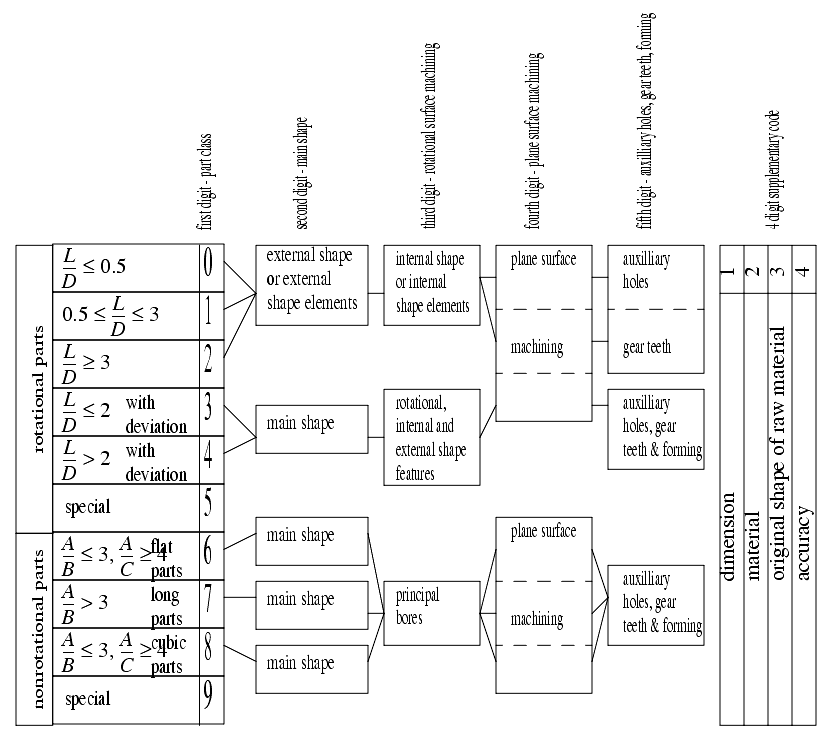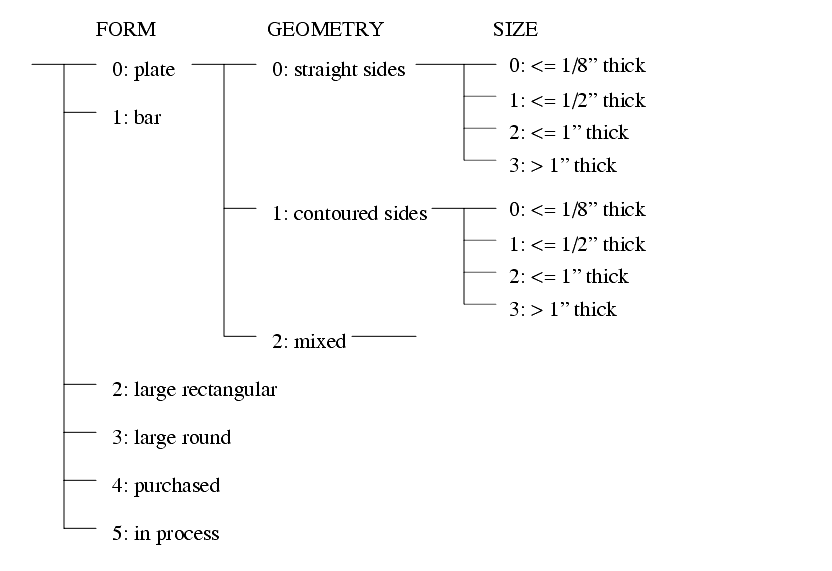
|
|
|
AQ:7.2 SOME DETAILS
������������The GT code is made up of a string of digits which identify specific attributes of a part.
If the digits of a GT code are unrelated, it is a polycode, and each digit may be looked up independently.
If the digits of a GT code are related, it is a monocode, and they must be looked up in sequence.
It is possible to have a hybrid GT code which is a combination of polycode and monocode.
When selecting what the GT digits represent, the guidelines are,
AQ:7.2.1 Optiz Code
������������One example system is the popular Opitz code, developed in a German university by H.Opitz.
This code uses a sequence of 5 digits, 4 digits, and 4 letters, such as `11223 4455 ADEA'
- The next four digits are the supplementary code - used to represent non-form details such as tolerances, materials, etc.
- The last four letters are the secondary code, used to represent production operation types, sequences, or other functions chosen by the manufacturer.
The Opitz code for a part is constructed from the first digit on, as shown in the tables below.

AQ:7.2.2 Decision Tree
������������Decision trees are developed to be specific to typical product line, or manufacturing facility.
To develop one of these trees we draw a tree that shows alternate possibilities for a part, and then number the options (care must be used to leave options not anticipated).
Part of an example decision tree is given below. This can be expanded as it applies to a particular manufacturer or industry.

Search for More: |

Custom Search
|

|